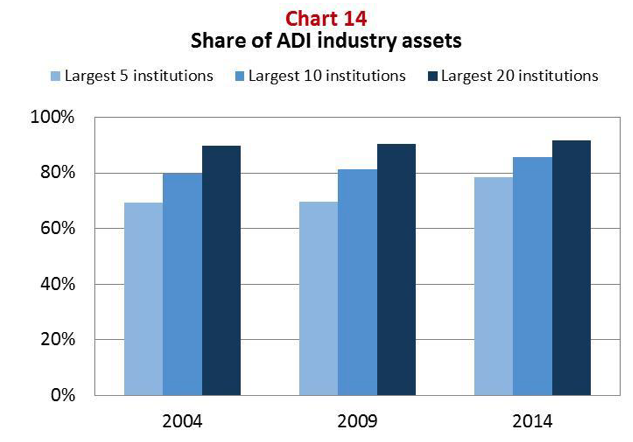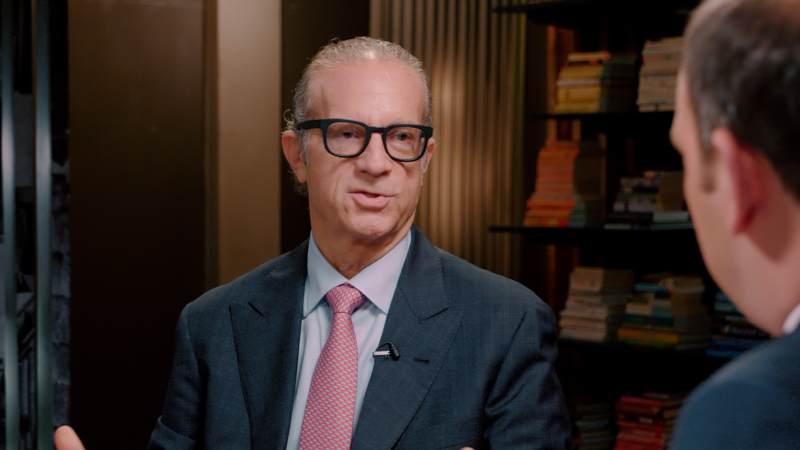The economist Hyman Minsky told us that stability is destabilising so how do we build an anti-fragile financial system that serves the real economy?
Scientists tell us that the degree of complexity and disorder in a closed system naturally increases over time, and that energy must be drawn from outside the system if you wish to reverse this natural tendency to disorder and complexity.
This is true not only in the natural world, but in economic systems, and especially in banking and finance, as we should surely by now have learned from experience.
By 2008, the global financial system had become so large and complex, with so many layers, types of institutions and contracts, and so many interactions, feedback loops and potential sources of contagion, complexity and even fraud, that virtually nobody fully understood how fragile and likely to crash the whole system had become.
The word ‘virtually’ is appropriate here because almost all of those who were aware of the causes and consequences of the evolution of the financial system into more and more complex states were people with a deep understanding of the life’s work of a single economist – Hyman P. Minsky. And by 2008 the work of this great economist, who had died in 1996, were almost universally neglected by economists and other who claimed to have expertise in banking and finance, and almost all out of print.
We all know what happened next.
But I don’t want to rehearse the causes and consequence of the Global Financial Crisis here, rather I’d like to instead focus on Australia’s commercial banking sector.
You might think Australia’s commercial banking is a relatively non-complex sub-system. You would be wrong. Australia’s banks are, today, in some ways less connected to the rest of the global financial system than they were before the GFC, and are therefore in some ways insulated from international financial crises. Less connected in the sense that they rely less heavily on the short term international money market for funding, and more on domestic deposits, and in addition have reduced their international investments (for example, NAB sold off its Scottish subsidiary Clydesdale Bank last year).
But Australia’s financial system is more concentrated, complex and fragile than it needs to be, and that it has been becoming more and more of an oligopoly. We now have one of the world’s most concentrated banking systems, with a five firm concentration ratio of about 80% (where the fifth largest bank is a comparative minnow). If you are an Australian, you might not even be aware that you bank with the ‘big 4’. You may not know Bank West is owned by the Commonwealth Bank, as are Aussie Home Loans (at least as the majority shareholder) and Colonial First State. You may not realise that St. George’s (once Australia’s fifth largest bank), Bank SA, the Bank of Melbourne and RAMS Home Loans are now just Westpac, by another name. Or that UBank and MLC are owned by NAB.

The British and American banking systems are much less concentrated than ours, but of course they are far bigger systems, with more banks of systemic importance to not only their national economies, and to the global economy. And in 2008, those systemic banks needed saving, and in most cases were saved and revived with government money, with little or no significant reform.
Australia missed the worst of that crisis, but now has a potentially fragile system likely to turn what should be relatively mild economic shocks – small increases in interest rates, a minor recession in a trading partner, a minor uptick in inflation, or a not unprecedented increase in unemployment – into a major crisis.
Or perhaps even cause the crash with no external stimulus? We are close to the point now where the scale of mortgage lending and size of the property bubble alone could trigger a downturn, without any discernible external shock. These concerns are shared by Economist Professor Steven Keen, Head of Economics, History and Politics at London’s Kingston University claims, in Debunking Economics, that the banking system itself could be the cause of the downturn. We may be close to that point in Australia, in that defaults may rise without there being an obvious cause, and this could trigger a recession on its own.
Australian banking is dominated by four megabanks which are essentially financial supermarkets, whose influence is found all over the financial and political systems. The ‘four pillars’ policy designed to prevent the oligopolies from merging encouraged their diversification, so that there is now no sector of the economy in which they are uninvested.
Consequently, there is no sector of the financial system which has not been designed to be consistent with their interests.
Politicians and various investigative bodies will, from time-to-time investigate, castigate and where unavoidable, regulate (at least superficially) these four very profitable and enormously powerful institutions. Occasionally they might even be taxed.
The problem is no new tax, or even a Royal Commission will change Australian banking for in any good or fundamental way.
Government has become a commodity in and of itself. The Big Four (plus Macquarie) are so deeply invested and tightly connected to it and the Opposition through funding, lobbying, political donations, think-tanks and enticements of well-paid post-Parliamentary positions, that the banking industry has bought itself a get out of jail free card. It has bought itself between $1.9 and 3.7 billion get-out-of-jail-free cards, according to a 2015 report of the Reserve Bank of Australia, (RBA).
The Big Four are amongst the largest companies listed on the Australian Securities Exchange, and feature heavily in the asset portfolios of most superannuation funds. We are (nearly) all their customers, and many of us are their shareholders. The banks are at the very heart of our monetary and financial system, from running the payments systems on which the whole of our economy depends, to providing essential credit to households, small and medium-sized businesses, and for some purposes large corporations.
They are too big to fail, as has often been said. They are too influential for politicians to confront, except in extremis. Most, if not all confrontation is designed to placate the public, forever seeking re-election, than for the purpose of any real and significant reform which might make our financial system less fragile.
There is as little genuine desire to reduce household debt, promote business growth and the capital development of our economy, (capital investment in business), as there is to make transparent to voters the workings of our monetary system.
To reduce the complexity and fragility of our financial system, we must necessarily facilitate a transition away from an economy based on household debt and towards an economy in which more people are invested and gainfully employed. Commercial banking in Australia requires very fundamental reform, in a way which might seem shocking.
The purpose of commercial banking has traditionally been to administer the payments system and decide which businesses and households should be given credit.
Hardly anyone has noticed, but we no longer need banks for the first of these two functions.
It is perfectly feasible for the Reserve Bank of Australia to offer every Australian the opportunity to hold transactions, savings and term deposits accounts directly with the RBA.
It would be relatively easy to achieve, and while not advocating Australia emulates Ecuador’s financial system, if something like this can be done in Ecuador, as it has been, it is certainly possible for Australia. Why would it not be?
If the RBA administered the payments system instead of the commercial banks, our transactions with each other could be cleared person to person, or business to business, in real time. The technology to do this already exists. It would not be difficult to do.
I repeat: we no longer need our massive commercial banks to run our payments system. If this was their main function, they would be seen as a tremendous waste of national resources. The banks have privatised a public service that would be more easily and efficiently handled centrally.
The banks have privatised a public service that would be more easily and efficiently handled centrally.
Within the confines of commercial banking activities, beyond controlling payments systems, the only significant purpose the banks serve is to underwriting private credit. (‘Underwriting’ in this context means assessing the default risk of potential borrowers, and then once credit has been created, carrying that risk until a loan is repaid).
Whether they do a good job of this, in light of increasingly risky lending practices in what appears to be a property bubble (at least in parts of the Sydney and Melbourne markets), is a perfectly legitimate question. It isn’t obvious the banks are doing a great job of assessing credit risk. It’s not clear that the regulator APRA sees things that way at all. For example, only this February the chairman of APRA felt the need to remind the banks they should be ‘under no illusion’ that regulatory intervention would be necessary if lenders continued to increase the growth in their interest-only mortgage lending. Fund managers have described many of these mortgages as ‘Australia’s sub-prime mortgages’, in a reference to the triggers for the US property crash which triggered the GFC, and at least one such fund has recently backed out of Australian investments, due to the risk of an ‘impending calamity’.
In principle, there is no reason why credit cannot be created by a public institution, in which case there is very little left for Australia’s big four banks to do, in terms of their core functions. Perhaps we don’t need them. Maybe they are obsolete. I would certainly advocate the formation of at least one public investment bank, like the government-owned KfW in Germany, with the role of providing funding for business investment within specific sectors of the economy.
However, it is generally accepted that properly regulated for-profit commercial banks play a useful role in business finance more generally, and in lending to the household sector (who wants public servants deciding on loan applications?). But this role can best be played by relatively small financial institutions. Small, local banks are more likely to provide finance to small businesses and to develop long-term relationships with those they support.
Small, local banks are more likely to provide finance to small businesses and to develop long-term relationships with those they support.
This is consistent with research in 2015 based on the Sageworks Bank Information data set indicating that larger US banks (those with assets of over $1bn) devoted less than 30% of their assets to small business lending, while smaller US banks (assets below $1bn) often had 30-60% of assets in this market. This is indicative of the relative significance of small businesses to these institutions.
Such small banks would allocate credit while simultaneously creating deposit liabilities for themselves (as banks do now), backed by a supply of liquidity at the cash rate from the RBA.
In return for this supply of cash – which is more or less how the current system works anyway – these banks would be closely regulated in terms of what they are permitted to do. Their role in the economy would be very clear.
There should be a cap on the size of the balance sheets of any new banking organisations who should, naturally, be tightly regulated. I won’t speculate as to what that limit should be, but no Australian bank needs to be larger than the Bank of Queensland, Bendigo and Adelaide Bank are today. We simply don’t need megabanks the size of the ANZ, the Commonwealth Bank, Westpac, or the NAB anymore. They should be broken up. They aren’t champions of the Australian economy, needing to compete on the world stage. That isn’t what our banks should be there for.
This is not a problem confined to Australia. It is one which exists in all modern economies. Immediately after the Financial Crisis, there was talk of limiting bank size in the USA, and a number of other countries, including Switzerland. But it never happened. As Robert Reich said, in a blog post on 21st October 2008,
‘We used to have public policies to prevent companies from getting too big. Does anyone remember antitrust laws?’
A 2012 publication of the Federal Reserve Bank of St.Louis described how the average size of US banks had multiplied by 5 between 1984 and 2011, while the number of banks had more than halved. It then made the point that four of the biggest 10 US banks failed or needed to be supported by the US Government during the Financial Crisis (Wachovia, Washington Mutual, Bank of America and Citibank), while just 6% of small banks failed (none of which posed systemic risks).
Professor Bob De Young, formerly senior economist with the Federal Reserve, and an officer of the Federal Deposit Insurance Corporation said, also in 2012, in American Banker,
“The business models and financial activities of the largest banking companies are simply riskier than those of smaller, more traditional banks’.
He put the optimal size of a commercial bank at an asset value of between $500mn and $1bn. Just in terms of loans made, the Commonwealth Bank is about 500 times this size. Even the relative ‘minnow’ Bank of Queensland is perhaps 30 times as big as this. Gary Stern and Ron Feldman, in Too Big to Fail: The Hazards of Bank Bailouts, said ‘policymakers will have to consider the loss of scale benefits when they determine the net benefits of breaking up firms in the first place.’ Even if Professor De Young is grossly underestimating economies of scale in banking, it isn’t clear that banks need to be as large as they are.
…the optimal size of a commercial bank at an asset value of between $500mn and $1bn. Just in terms of loans made, the Commonwealth Bank is about 500 times this size.
Banks exist to assess who should-and-should-not be given credit. They exist due to a belief it can be done more efficiently in the private sector, by for-profit institutions. In a system that worked to protect the interests of customers, banks would still have depositors, but they would always have the option of holding deposits directly at the RBA. Smaller banks would always have the option of being partially funded from the RBA, as long as their balance sheets were strong enough to meet regulatory requirements.
Securitisation of finance contributed to the GFC and should simply be banned. There is no justification for its continued existence, particularly in Australia which likes to pretend it is more tightly regulated than the US but is actually just as vulnerable to an economic event of unprecedented proportions. However, at the moment there is, comparatively speaking, very little securitisation in Australia, and the market for asset backed securities was greatly reduced as a result of events elsewhere in the world in 2008/9. It isn’t the main issue in Australia in 2017. The main issue in Australia is the unnecessary size and scope and excessive power of the major banks, and the impact they have on our economic discourse and policies, and the direction of our asset markets and economy.
In an economy of upper, middle and working-class financial insecurity, (particularly one leveraged up to the eyeballs in private debt) likewise makes the impact of a crisis more crushing, more widely felt and will likewise take longer to recover from. Moreover, economic insecurity prevents more people from even having the capital to create businesses in the first place.
We certainly do not need mortgage backed securities, or any other form of securitised bank lending. In this model, bank loans would remain on bank balance sheets, banks would only engage in derivatives transactions when meeting the legitimate risk-management needs of business customers, and such derivatives would be limited in scope and highly regulated.
As for the areas of financial services beyond commercial banking into which the long tentacles of the ‘Big Five’ currently stretch, I won’t address them here – but they would best be separated from commercial banking itself and provided through independent and separate institutions.
What I have described above is a far simpler, less complex, more easily regulated and supervised system. No bank would be ‘too big to fail’, and no single institution or group of institutions would be in a position to intimidate governments or excessively influence government policies.
And it would be crystal clear to all exactly who it is in Australia who is at the peak of the monetary pyramid – who rules the roost in our monetary system.
The answer to that question is ‘the owner of the central bank’. The Australian Commonwealth Government owns the RBA. The Australian Commonwealth Government sits at the top of our monetary system. The Australian Commonwealth Government is the monetary sovereign, currency-issuing central government, and the only institution with a limitless ability to create Australian dollars. The same thing is true of the Bank of England in the UK. And the Federal Reserve in the US, despite its unusual legal status, is also a ‘creature of Congress’, and part of the state.
This shocking fact is obscure to most people today, but it is a fact, even now. If we could summon the energy outside our banking and financial system, to simplify and demystify the workings of Australian banking, we could make this crystal clear to all.
That might well be the greatest benefit of all, from greatly simplifying and strengthening our national financial architecture.

With workers pushed to breaking point, is it now time to call time on predatory business models?

Both COVID-19 and the climate crisis are being used as camouflage for central bankers to throw more printed money into a broken system.

With proper access to land denied to the vast majority, is it now time to reclassify trespass as a revolutionary act?